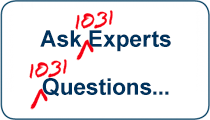You are here
1031 News › Six things you need to know about §1031 - Part 4 You cannot touch the money › Six things you need to know about §1031 - Part 4 You cannot touch the moneySix things you need to know about §1031 - Part 4 You cannot touch the money
Error message
Deprecated function: The each() function is deprecated. This message will be suppressed on further calls in _taxonomy_menu_trails_menu_breadcrumb_alter() (line 436 of /home/expert1031/public_html/sites/all/modules/taxonomy_menu_trails/taxonomy_menu_trails.inc).Section 1031 of the Internal Revenue Code allows you to roll the gain from the sale of your Old Property to the purchase of your New Property -- and not pay any capital gains taxes! To do this, you have to jump through certain hoops.
We've talked in Part 1 about how your property has to be held for investment or business use, and that it can not be held for resale (like a developer or fix-&-flips). We talked in Part 2 about your requirement to identify and list potential replacement properties for your exchange within 45 days of the closing of your sale of the Old Property. In Part 3 we talked about the requirement that you purchase your replacement property within 180 days of the sale of your Old Property, and that you must buy at least one of the properties listed on your 45 Day List.
Now, Rule 4 says that you can not touch the money in between the sale of your Old Property and the purchase of your New. By law, you have to use the services of an independent third party called a qualified intermediary. The intermediary holds the money and also does the exchange paper work required by the IRS, for both the sale of the Old and the purchase of the New.
You would think that with all of the responsibility that goes with holding large amounts of cash, that intermediaries would be highly regulated, but they are not. There are no laws governing, or regulating, qualified intermediaries. Not any of the 50 states, and not the federal government. Nobody regulates intermediaries. Nobody.
So it should come as no surprise that there have been abuses involving theft of clients exchange money. There are two ways that intermediaries hold money for their clients: a commingled account where all of the clients money is combined into one account (probably 95% of the intermediaries use commingled accounts), and separate, or segregated accounts where each clients money is put into its own account.
In each instance of theft of client's money by the intermediary that I can find, the intermediary dipped into a commingled account. In a recent case in Minnesota, the intermediary filed bankruptcy after depleting the commingled account through day trading losses.
The court subsequently ruled that, because the intermediary held money in a commingled account, the account was an asset of the intermediary company and the small amount remaining in the account could be used to pay other creditors, including, for example the landlord. In addition, because the commingled account was determined to be an asset of the company, all clients who had completed their exchanges in the 90 days before the bankruptcy had to send their money back to also be used for the other creditors.
How do you protect yourself? Make sure that your exchange money goes into an account with only your money in it. As soon as your exchange is completed, verify with the bank that only your money is in the account. And then, from time to time, check on it to make sure that it is still there. Our company is one of the few companies that put every client's money in its own separate account. In addition, we are the only company in the Nation to offer 1031Access™. 1031Access allows every one of our clients to come through a secret portal in our web site, and using their private password, view their account at the bank. They can see, 24/7, everything that has come into, or gone out of the account, including all of the interest the account has earned, and the interest rate the bank is paying the client on the account.
Like the court said, "caveat exchanger," or exchanger beware!





Add new comment